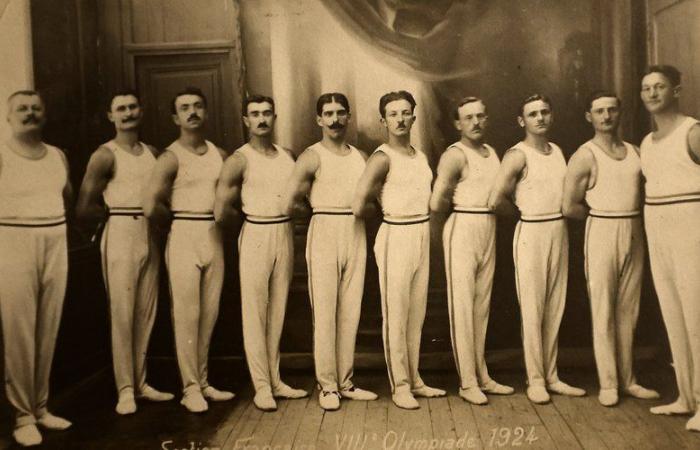
A record for bronze, the violent farewells of rugby union, the savate on display, wine to hydrate the athletes, artistic tests on the medal table… turned towards modernity, the Paris-1924 Olympics sometimes remained baroque and folkloric.
A jump worth its weight in gold
With a jump of 7.76 m, American Robert LeGendre beat the world record for the long jump by 7 cm. Except that he did not achieve this performance during this competition, won by his black compatriot DeHart Hubbard who landed… 31 cm less far, but during one of the pentathlon events. An exploit that did not really pay off, since it ultimately only earned him a bronze medal.
Veni vidi oval
For the fourth time, rugby union is on the programme. Only three countries are in the running, the defending champions USA, France and Romania. The British and southern hemisphere nations snub the tournament, claiming that rugby is played in winter.
The American team, made up of university specialists in American football and basketball who had only learned the rules of the sport during their first meeting, retained their title against the Blues (17-3). A confrontation that sometimes turned into a brawl on the field and even more so in the stands at Colombes.
Whistles accompany the raising of the star-spangled banner and the American anthem, a large police presence protects the players’ hasty exit. We are quite far from the Olympic spirit. And as Pierre de Coubertin, who had it included in the Games program in 1900, withdrew from the IOC in 1925, rugby lost its promoter, disappearing until its reintegration in its sevens variant in Rio in 2016.
Red wine against sunstroke
A massacre occurs during the cross country event: under 40 degrees, more than half of the participants suffering from sunstroke give up. So for the marathon, a few days later, in similar conditions, the organizers have numerous water points on the route. And during these refreshments, large glasses of wine are also served.
Nothing new: during the 1900 Games, already held in Paris, the merits of this drink were praised in advertisements for athletes, as well as for the cyclists of the Tour de France who regularly consumed it during the stages. It was the Finn Albin Stenroos who won the marathon, with a six-minute lead over the competition, but taking care not to raise his elbow.
Paris-expo
From the beginning of the Olympic adventure, the most popular sports of the time, but also those known as aristocratic or military sports, were part of the various programs. Thus, in no particular order, there followed the game of bowls, the hot-air balloon competition, fishing, polo, croquet, tug-of-war, pigeon release, but also live pigeon shooting, standing jump, swimming with obstacles, etc.
In 1924, savate was invited to the Paris Games, but a little late because it had been in decline since the end of the First World War. Cane combat, widely practiced in France, even in the famous television series Les Brigades du Tigre, was also exhibited, as was Basque pelota, which made a comeback after an initial incursion in 1900. These disciplines did not make the cut, unlike Canadian canoeing, which became an Olympic sport in Berlin in 1936 under the name of canoe-kayak.
Gold in art
During these 1924 Olympic Games, medals were not awarded only to athletes. The artists also compete, for the third time after 1912 and 1920, in accordance with Pierre de Coubertin’s wish to respect tradition, uniting art and sport, dating back to ancient Greece. Five disciplines are on the menu: painting, sculpture, music, literature and architecture.
The works presented have a unique theme of sport. No less than 193 registrants from 24 countries exhibit their works at the Grand Palais and 14 medals are awarded by juries including artists much more prestigious than the participants, notably the composers Maurice Ravel, Igor Stravinsky, Béla Bartok, the writers Jean Giraudoux and Paul Claudel, or the painter Fernand Léger.





